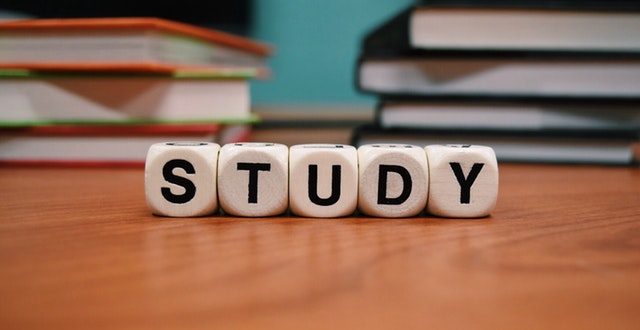Unless you are a flat out genius with a photographic memory, study is essential for doing well on exams. I’m guessing that most of us are not in that genius group. Therefore, we have to take the time to learn, refresh, and remember information the good old-fashioned way. That said, there are some study strategies for better exam scores. Let’s take a look at a few.
Create a Study Schedule
Whether you’ve got one exam or several exams to study for, it’s worth creating a timetable so you can stay on track. List all the things you need to cover and spread out over the time you have. Dedicate more time to those topics that are challenging.
I do also recommend scheduling broken up times, so you can rest your brain in between. Pushing yourself to exhaustion won’t help! Tell your kids this, too, should they want to study all the time…lol. We can only hope, right?
Find a Private, Comfortable Space
Most people find it easier to study alone in a place that is free of distractions. On the other hand, some people can study well while watching TV, listening to music, and holding a conversation. That’s not me, but I’ve seen it done! Anyway, do what makes you comfortable and gets the best results.
You could study at home in your bedroom (or in a designated study room if you have one). Alternatively, you could go to the library. Check at the office or school for areas that would suit your needs. You may also find it more productive to study with other people, especially if they are classmates or colleagues working toward the same thing.
Take Mock Tests
Completing mock tests will help you to know what you’ve learned as well as what you need to work on. If your actual exam will be timed, I recommend setting a limit on your practice tests. It also helps to test your ability to recall facts under pressure. If you’ve been working with others, you could do oral exams with each other as well. There are also sites such as Uworld LLC that have study resources for professionals and students.
Experiment with Visual, Auditory and Kinesthetic Learning
Common study practices include writing down notes and reading them repetitively. And though this works well for some, it’s not the only way to learn. It’s important to understand your learning style and incorporate methods that line up with it.
Some of us are primarily visual learners (learning using images, graphs, charts, maps, and diagrams), some of us are primarily auditory learners (learning that involves listening to others) and some of us are primarily kinesthetic learners (learning using physical or hands-on activities).
Experiment with different learning styles if you’re not sure which one works best for you. You could also glean from using all of them. This could include writing down notes and reading them, recording yourself reading notes and listening back, putting information into graphs, and matching important notes to exercises and physical actions. You can learn more about the four types of learning here at Rasmussen College.
Reward Yourself with Regular Breaks and Treats
Trying to cram information for six hours straight isn’t going to serve you. Many of us lose concentration after an hour or two or even less. Scheduling in small breaks could help to restore concentration and give you a new perspective on the material. Furthermore, give yourself small treats such as your favorite food, beverage, or other rewards that make you feel good. Your brain will begin to associate learning with these pleasures and rise to the occasion much easier.
 Women's Life Link Be Well, Be Happy, Be YOU!
Women's Life Link Be Well, Be Happy, Be YOU!






